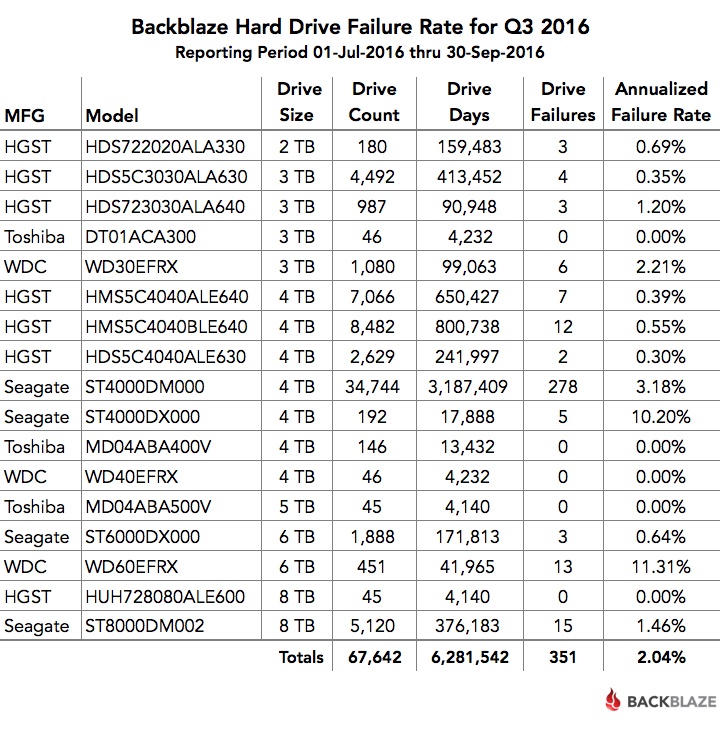As you can see, the tables they published simply group the drives by model and that's it. No grouping by age, writes/reads quantity, conditions and so on. According to this table, WD tops out the failure rates with 11.31% failure on their WD60EFRX drive. This is a 6TB WD Red drive designed for small home NAS systems, not large datacentre environments. Coming in second with 10.20% failure is the Seagate St4000DX000, which is a 4TB Barracuda drive, which is an internal desktop drive. In terms of raw numbers of failed drives, the Seagate ST4000DM000 was top with 278 drives failing. This is also a 4TB Barracuda drive, but they did use 34,744 of them and they had a total of 3,187,409 drive days run time, more than three times any of the other drives.

https://linustechtips.com/main/topi...me-more-flawed-hdd-failure-statistics-for-q3/



